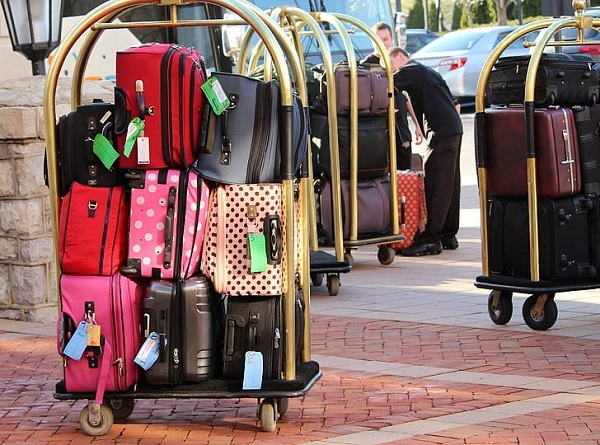India’s organised luggage industry will see revenue growth reduce to 8-10% this fiscal from ~18% last fiscal, primarily due to a high base, as industry size almost doubled between fiscal 2022 and 2024.
Demand remains stable, backed by continued penetration of hard luggage, steady tourism and corporate travel.
However, realisations have reduced due to two factors. First, increasing competition among manufacturers with the entry of new players and, second, increased inventory levels due to moderation in volume growth, which has led to aggressive pricing and impacted average selling prices, mainly in the economy segment.


With falling realisations, operating margin dipped 150 basis points (bps) in fiscal 2024 and will drop a further 30-50 bps between 13.5-14.0% this fiscal. The impact would have been higher but for increased contribution from own manufactured hard luggage segment, as against imports, and stable raw material prices.
Nonetheless, inventory rationalisation during this fiscal will limit any further downside on average selling prices and reliance on external debt, which will support credit profiles over the medium term.
A CRISIL Rating analysis of the luggage makers it rates, accounting for ~85% of the organised sector’s Rs 7,800 crore revenue, indicates as much.
The Indian luggage industry is dominated by a few large organised players, which have increased domestic capacity and backwards integration over the last three fiscals, while the unorganised sector remains largely dependent on China for its requirements.
A strategic shift of luggage makers to own hard luggage manufacturing segment is reflected in imports growing slower (than the industry) at ~5% in the past five years.


Says Mr Himank Sharma, Director, CRISIL Ratings, “Rising preference for hard luggage and better quality at competitive prices has benefited organised players, with their share in the Indian luggage industry increasing to ~45% this fiscal. However, risks are rising, too, as tapering of growth after three years of double-digit runup and rising competition from new entrants will lead to higher promotional expenses and, thereby, moderation in margins.”
That said, some support is expected from stable prices of raw materials – polypropylene, polycarbonate, and polyamide, which comprise 40-45% of the cost for luggage makers – even as continued consumer preference towards hard luggage aids operating efficiency.
The inventory level, which rose to 114 days in fiscal 2024 on account of moderation in demand, is on the mend and is expected to moderate to 100-105 days for this full fiscal.
Debtors remain stable, indicating the control of organised players over their sales channels even as they expand retail networks to Tier 2 and 3 cities. This will lead to lower reliance on short-term borrowings by the luggage makers.
Given continued balance sheet strength, steady demand and almost full capacity utilisation, the players are expected to further increase the manufacturing capacity for hard luggage.
Says Rushabh Borkar, Associate Director, CRISIL Ratings, “Capacity is expected to rise by a fourth, which would involve a capital expenditure of Rs 500-550 crore this fiscal. It will be largely funded by cash flows from operations and liquid surplus. Hence, overall debt is expected to reduce, supporting the gearing and debt protection metrics. Total outside liabilities to adjusted net worth and interest coverage ratios of luggage makers rated by CRISIL Ratings will remain comfortable at 1 time and 8 times, respectively.”
Also Read
Kerala Travel Mart 2024 set to surpass records
Watch on Youtube
